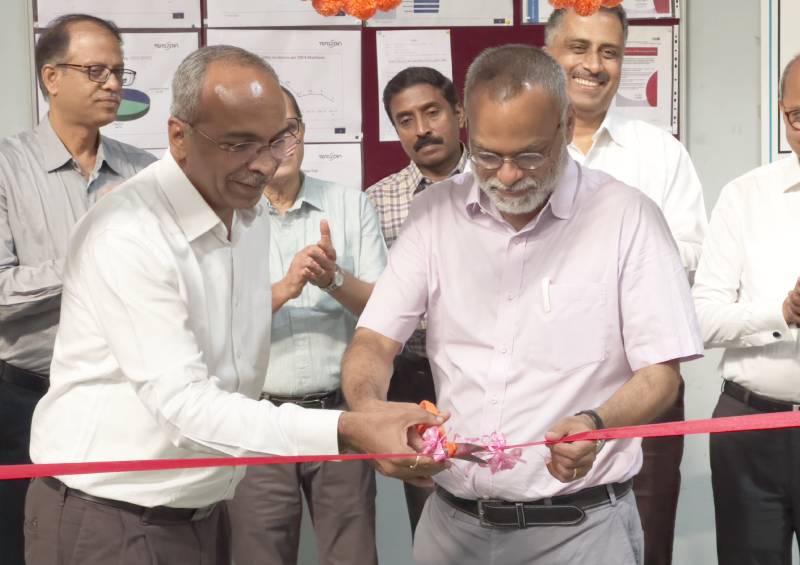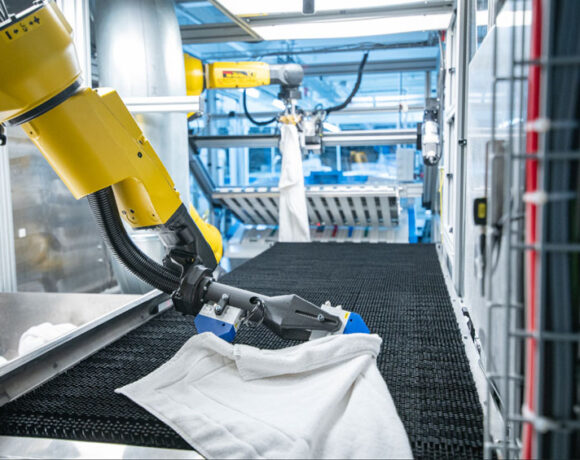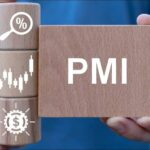First ‘Lean Assembly Line’ At TeraSpin Plant Inaugurated

Recently, Anuj Bhagwati, Head of the A.T.E. Group, inaugurated the first ‘Lean Assembly Line’ of spindle insert at the TeraSpin plant at Sari, Gujarat.
All companies in the A.T.E. Group have always aimed to produce highest quality products in their respective domain, recognising the fact that an organisation’s strength lies in its manufacturing capabilities. The company has adopted the ‘Lean manufacturing methodology’ which will help it to reduce all types of wastages in the processes.

Glimpse of the first ‘Lean Assembly Line’ at ‘TeraSpin’ plant
The company has derived the following benefits so far from the “Lean assembly line”:
- Transportation has reduced by 66%
- Inventory has reduced by 80%
- Motion reduced by average 71%
- “Pull system” is in active mode now.
The company has put in place all required systems, which will facilitate reduction of all forms of wastages/defects.
The success of “Lean” goes beyond financial metrics. A balance scorecard approach focusing on the financials, customers, employees and other stakeholders is crucial.
“Lean” principles aim to enhance efficiency and sustainability in manufacturing by eliminating waste and improving process efficiency, thereby ensuring customer satisfaction. “Lean” methodology aims to eliminate waste and improve process efficiency by implementing a systematic approach across various methodologies, processes, and manufacturing principles.

Information sharing session of the first ‘Lean Assembly Line’ at ‘TeraSpin’ plant
“Lean” principles are:
- Value: Determined from the perspective of the customer and relates to how much they are willing to pay for products or services. This value is then created by the manufacturer or service provider who should seek to eliminate waste and costs to meet the optimal price for the customer, while also maximising profits.
- Map the value stream: The principle of value stream analysis involves analysing resources and waste throughout a product’s lifecycle, identifying and removing non-value-adding stages to improve efficiency.
- Create flow: It is about removing functional barriers to improve lead times. This ensures that processes flow smoothly and can be undertaken with minimal delay.
- Establish a pull system:It works by only commencing work when there is demand. This is the opposite of push systems, which are used in manufacturing resource planning system.
- Journey towards excellence: Steps 1-4 are crucial, but the 5th step is incorporating lean thinking and process improvement into corporate culture. Employee involvement is essential, as lean is not static and requires constant effort and vigilance to perfect. Lean experts assert that a process is considered truly lean when it has undergone at least half a dozen value-stream mappings.
The 8 wastes of “Lean” manufacturing:
- Transport: Moving the product around unnecessarily is a waste of time and effort, and increases the likelihood that it will be damaged.
- Inventory: Any unused materials are wasted capital. It is money just sitting around in the form of raw materials (0%), work-in-process (50%) or finished goods (100% complete)
- Motion: The “wear and tear” on the equipment or the people involved in the process. If you are transporting the product around unnecessarily, you are also wasting the motion of the trucks, forklifts and warehouse workers.
- Waiting: Time that the product is sitting there – not being transported or processed. Or the time that people are waiting for the product to arrive. The largest and most frustrating waste.
- Over-processing: Doing more to the product than is necessary.
- Over-production: Making more than is necessary, usually because the production batches are too large.
- Defects: Imperfect production that requires re-work or doing work again.
- Skills: Not using people’s capabilities, talents and interests.














